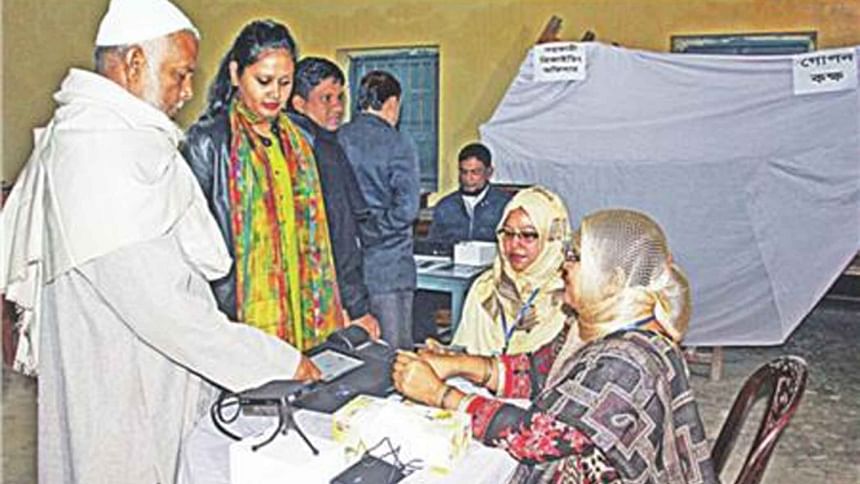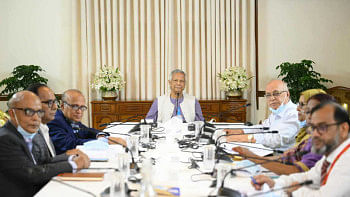How to build trust in EVMs and the electoral system

As per statistics of the International Institute for Democracy and Electoral Assistance, out of 178 countries of the world where elections are held, e-voting is currently being used, partially or wholly, in the national elections of only 28 countries. However, only 13 countries are currently using electronic voting machines (EVM) in all their elections, including national elections. A few other countries used or piloted EVMs and later abandoned them. Countries such as Germany, France, the Netherlands and Pakistan abandoned EVMs after using them for years, while Brazil, India, and Philippines have been using EVMs for some time in all their elections.
The reasons for abandoning EVMs vary from country to country. But the most common reasons are doubts raised about the security, accuracy, reliability and verifiability of the machines, including a lack of transparency, as well as the limited openness and understanding of the system by non-experts. Remote electronic voting, which is also known as internet voting, is vulnerable to external attacks by hackers, while the hardware and software of Direct Recording and Enumeration, also known as localised electronic systems, can be manipulated.
Even when publicly testing an electronic voting system before use, there are at least three challenges with testing. First, it is not possible to know every vulnerability. Second, and relatedly, it is not possible to determine how a computer software or hardware module will perform in all circumstances. Hence, even for each known vulnerability, it is not possible to fully test that an electronic voting system will function as desired in each possible scenario. Third, computerised systems, such as the EVM, can be programmed to determine when they are being tested and to behave as expected during the test. The absence of problems during testing does not mean that problems don't exist. For these three reasons, no EVM in the world can be assumed to be tamper-proof. Therefore, there is no universally accepted guiding principles or widely agreed standards for certification of e-voting.
Then, why do some countries continue using EVMs? The key reason is that EVM is often seen as a tool for making the electoral process more efficient. Properly implemented, e-voting solutions can increase the security of the ballot, speed up the processing of results and make voting easier, and provide more accurate results as human error is excluded. The proponents of EVMs have also argued that e-voting can strengthen the credibility of elections by reducing the risk of double voting and spoilt ballot papers. In Brazil, the primary reason for adopting EVM was "to combat endemic fraud in the paper ballot tabulation process". Similarly, in India, there is "strong evidence that EVMs resulted in a very significant decline in electoral fraud". The EVM system also ensures faster vote counting in a complex electoral environment where the number of voters is high. For example, during the 2018 presidential election in Brazil, where the number of voters was 213 million, the result was announced in only two hours and 16 minutes after the polls were closed.
In most countries where EVMs are being used – either "successfully" or "unsuccessfully" – debates about the soundness of the machines have been an integral part. In India, since the introduction of EVMs in 1982, there have been recurrent debates about their use for the past 40 years. Although their use was initiated by the Congress Party, and opposed by the then opposition Bharatiya Janata Party, it is now termed as the Modi Voting Machine by Congress leaders. Political leaders who lost in the elections challenged the credibility of EVM in various Indian courts at least nine times, asking for a suspension of their use. But the court always ruled in favour of using the machines. The Election Commission of India has added voter verifiable paper audit trail (VVPAT) with the machine as per the order of the court, and later introduced the matching of EVM results with VVPAT slips during vote-count.
In Brazil, EVM has been used for more than two decades, retaining a surprisingly high degree of popular trust. During this period, there has been no evidence of fraud in the voting system – but it has been the subject of much debate. During a recent debate, the country's far-right president Jair Bolsonaro made claims of voter fraud, but failed to provide any evidence. Therefore, the Brazilian election commission insists that the system is transparent and has never been tainted by irregularities. However, later, Bolsonaro argued for a paper printout to be made of each vote cast, suggesting that the absence of a paper trail makes cheating easier.
In Bangladesh, the current version of the EVM, which is a standalone automated machine, was first piloted in 2017, and later used in many local elections including Dhaka (2020) and Chattogram (2021) city corporation elections, in six constituencies in the 2018 parliamentary election, and in many parliamentary by-elections. However, the way the machine was piloted, or used, did not comply with the best practices, as there was no comprehensive consultation about the machine. However, the current Election Commission (EC) is planning to use the devices in one-third of the constituencies in the next parliamentary polls. The Chief Election Commissioner, in support of their use, said, "EVMs are better than ballots, even if there are pros and cons". So, it is clear that the EC will use EVMs in future elections, probably to stop massive ballot stuffing on election day as well as the night before.
Therefore, the EC has been trying to build public trust regarding EVMs through various initiatives, including customisation in front of candidates and/or their representatives, publishing the EVM-generated result-sheets, etc. However, much more has to be done in order to win the public's trust.
The machine should be made open for all so that anyone can get access to any of the machines to verify or examine them. Regular hacking competitions need to be organised so that hackers officially get the chance to tamper with the software or hardware installed in the machines, as well as physically interfere in other stages of the process, which will prove the soundness of the machine and that it does not compromise credibility. Public security tests need to be organised, including engineering test, audit of the voting machine software, audit of the biometric system, audit of the voting machine production, and audit of the tabulation software. The programming source code should be opened so that anyone can get access. Introduce VVPAT with EVMs which will ensure that voters can verify their votes were cast correctly. And finally, introduce mandatory VVPAT slip-based audit of certain percentage of votes for verification.
I am not a proponent or opponent of EVMs and paper ballots. I only support an electoral system that ensures the credibility of elections – which is also supported by all. As the right to choose our political representatives through free and fair elections is a cornerstone of democracy, and a fundamental human right of the people, there should not be a shadow of doubt over our electoral system. The process must be transparent to the voters. As the credibility of EMV has been a long-standing question, and has become the topic of debate in every corner of the world, the above-mentioned recommendations could help the EC build trust. Otherwise, the debate over EVM will continue, and the credibility of our elections will be questioned.
Dr Md Abdul Alim is an international election specialist and has worked with the Shamsul Huda-led Election Commission; E-mail: [email protected]

 For all latest news, follow The Daily Star's Google News channel.
For all latest news, follow The Daily Star's Google News channel. 



Comments